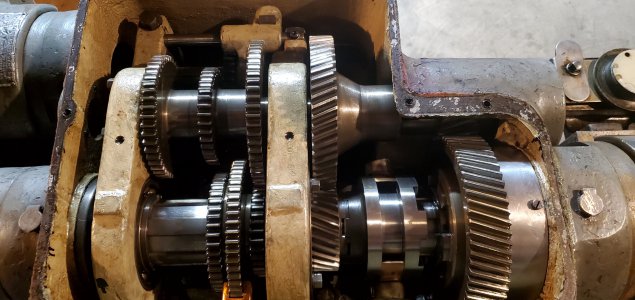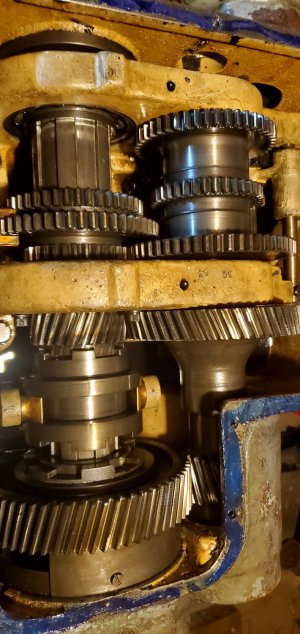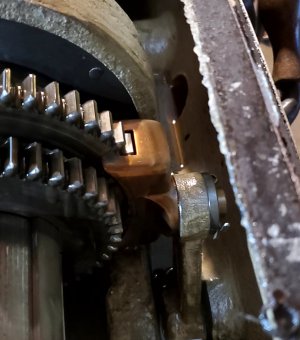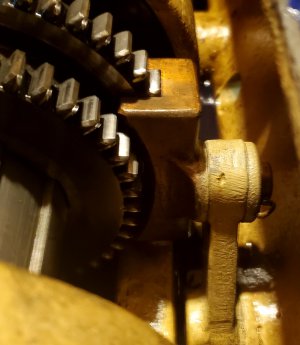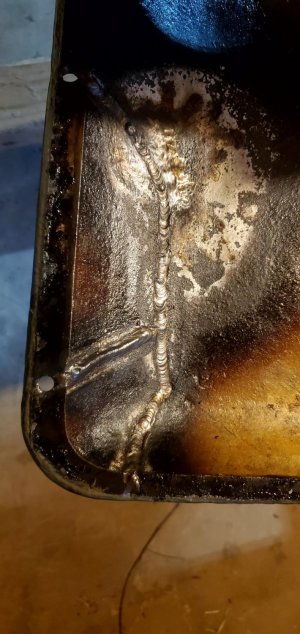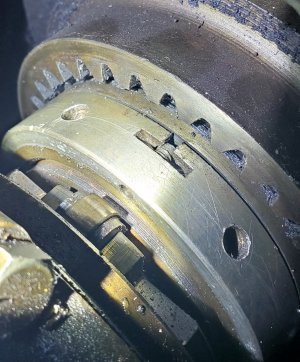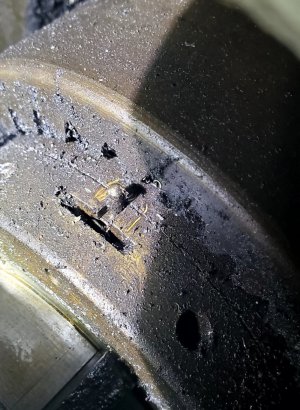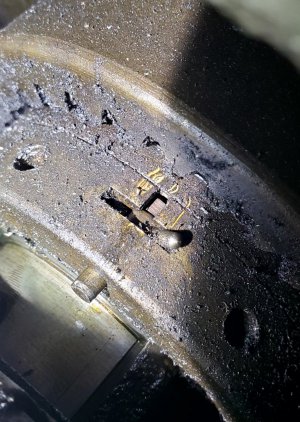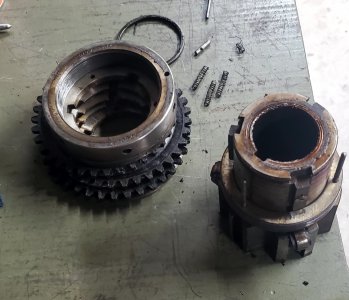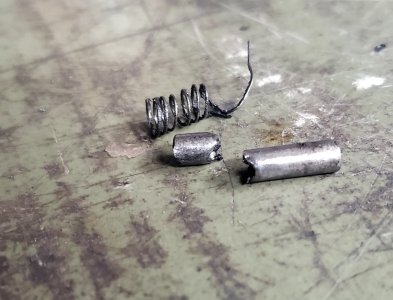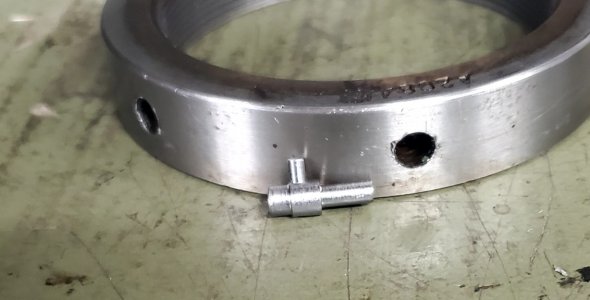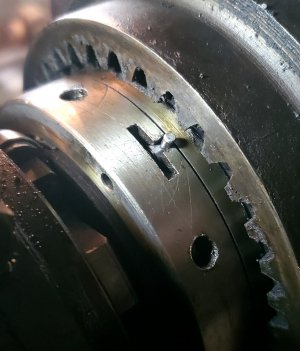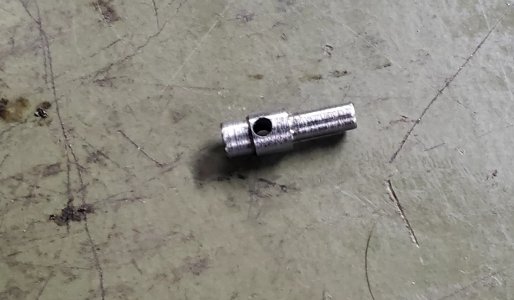- Joined
- Nov 28, 2016
- Messages
- 2,352
I'll call this 'A Tale of Two Hendeys'...
I've rescued two Hendey gearhead lathes from being scrapped. They are both 12" x 30" models, one was built in 1940, the other in 1944.
Just for a not-so-quick rundown on what I've found out so far...
The 1940...
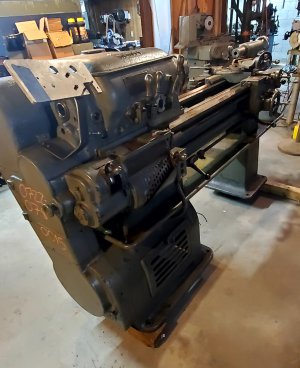
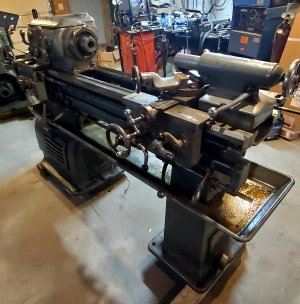
This lathe was originally purchased by Colt Firearms in 1940. It is called a 12" swing, but was ordered as a 'raised swing' model, actually giving 14 ½". It has an L-01 spindle with ball bearings, and has a taper attachment.
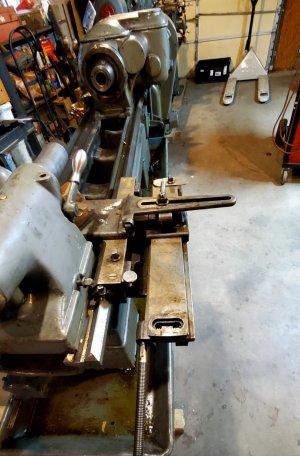
It originally came with a 5hp 220v 2 phase motor, which has been replaced with a much newer 5hp Dayton 220v 3 phase motor. There is minor wear on the ways, and the cross slide feed clutch handle has been broken off. The lower control rod pivot bracket is also broken. The main power box and magnetic starter is also missing. Aside from all that, it appears to be in decent condition.
The 1944...
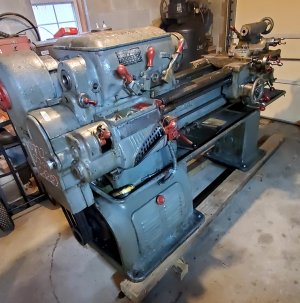
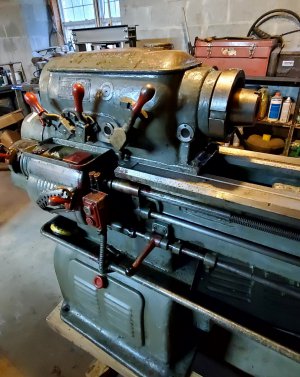
This lathe was originally sold to a high school shop in Pennsylvania... as evidenced by the condition of the compound...
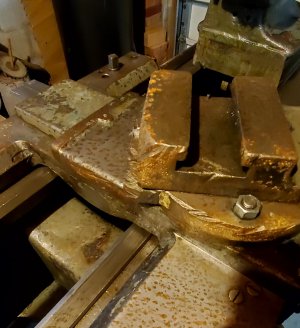
It is also a 'raised swing' model, with the L-01 spindle nose, but this one was ordered with the Timken roller bearing spindle. It was also ordered with a thread dial... which is uncommon for Hendeys...
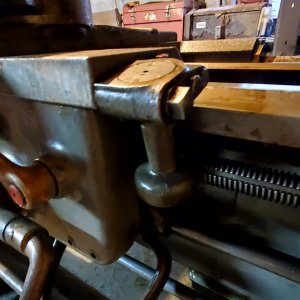
This is the first Hendey thread dial I've ever seen. It still has the original Continental 2hp 220v 3 phase motor. Again, there is minor wear on the ways, but otherwise appears to be complete and in decent running condition.
My plan for the two lathes is to attempt to get both running and evaluate the useability, then build one lathe from the two.
I don't think the '44 will need much... if not, I may end up building two lathes...
-Bear
I've rescued two Hendey gearhead lathes from being scrapped. They are both 12" x 30" models, one was built in 1940, the other in 1944.
Just for a not-so-quick rundown on what I've found out so far...
The 1940...


This lathe was originally purchased by Colt Firearms in 1940. It is called a 12" swing, but was ordered as a 'raised swing' model, actually giving 14 ½". It has an L-01 spindle with ball bearings, and has a taper attachment.

It originally came with a 5hp 220v 2 phase motor, which has been replaced with a much newer 5hp Dayton 220v 3 phase motor. There is minor wear on the ways, and the cross slide feed clutch handle has been broken off. The lower control rod pivot bracket is also broken. The main power box and magnetic starter is also missing. Aside from all that, it appears to be in decent condition.
The 1944...


This lathe was originally sold to a high school shop in Pennsylvania... as evidenced by the condition of the compound...

It is also a 'raised swing' model, with the L-01 spindle nose, but this one was ordered with the Timken roller bearing spindle. It was also ordered with a thread dial... which is uncommon for Hendeys...

This is the first Hendey thread dial I've ever seen. It still has the original Continental 2hp 220v 3 phase motor. Again, there is minor wear on the ways, but otherwise appears to be complete and in decent running condition.
My plan for the two lathes is to attempt to get both running and evaluate the useability, then build one lathe from the two.
I don't think the '44 will need much... if not, I may end up building two lathes...
-Bear


